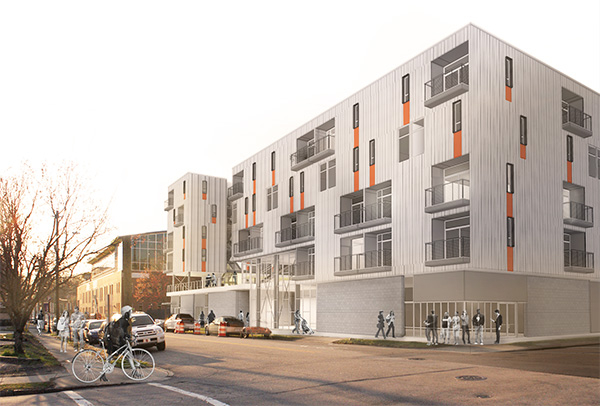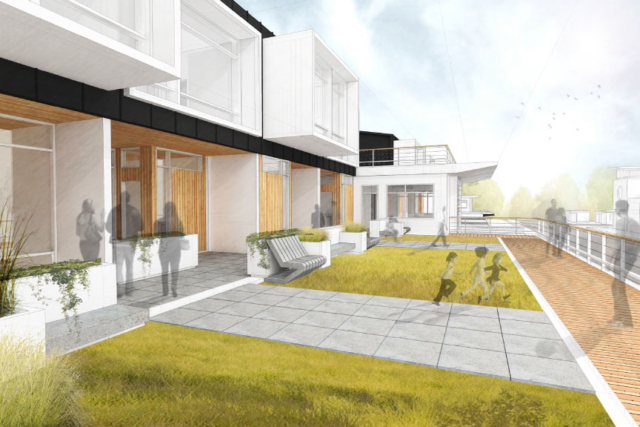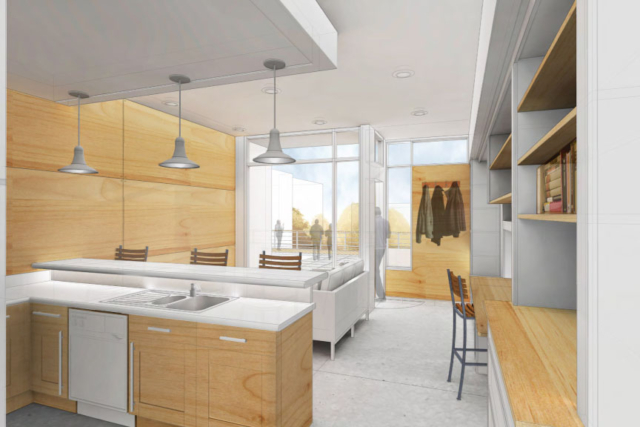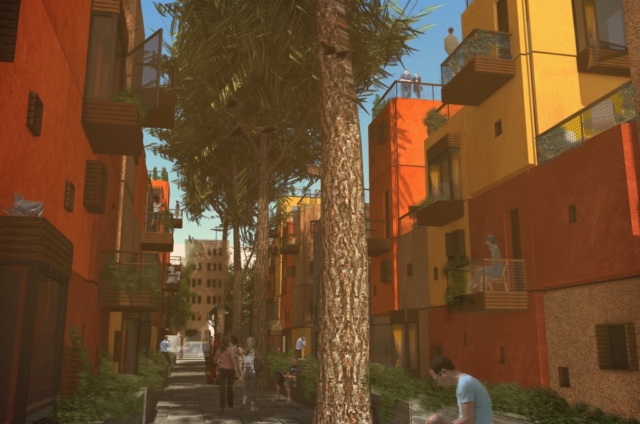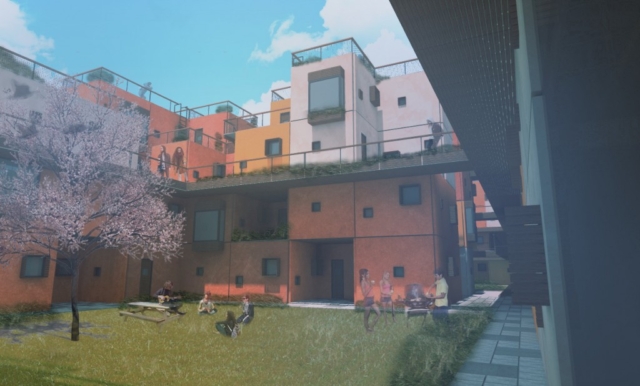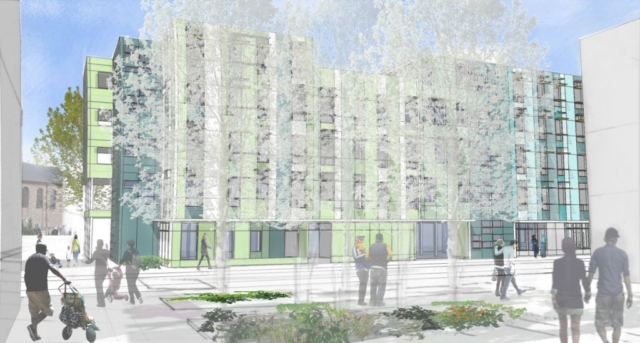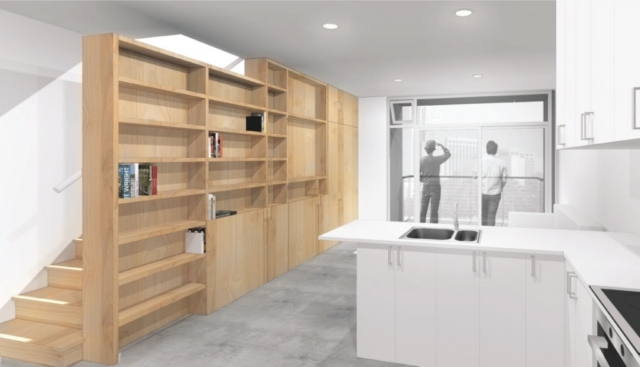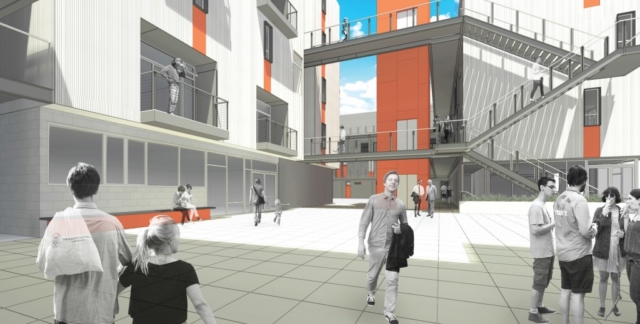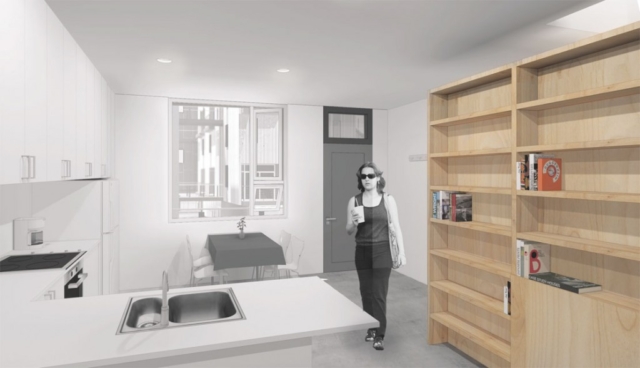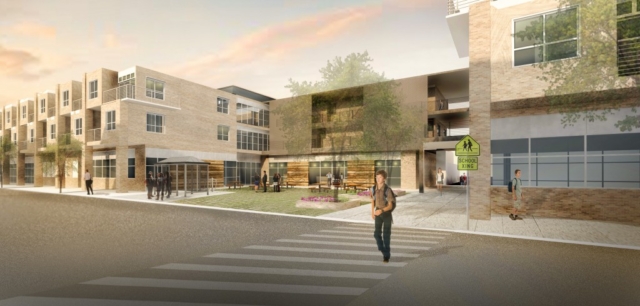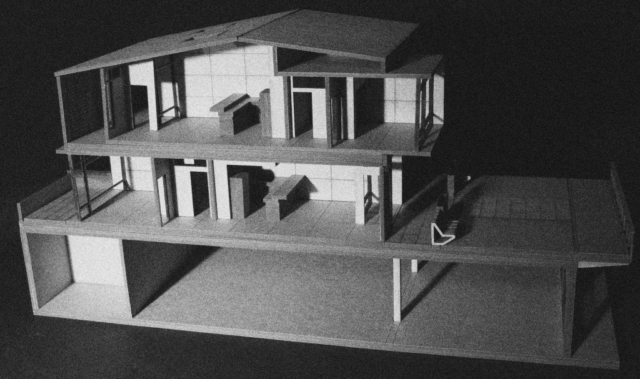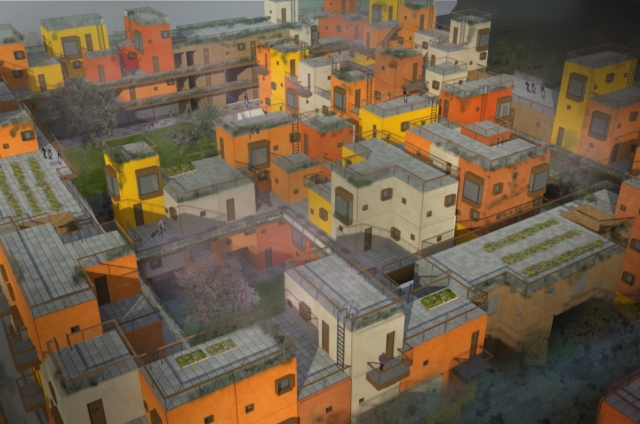Affordable Multifamily Housing | Cultural, Economic and Environmental Sustainability
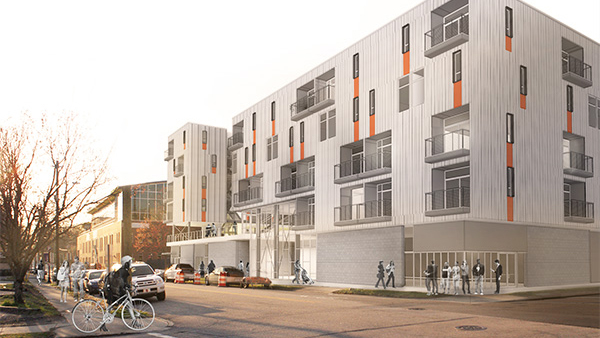
Advanced Design Studio | Spring 2014
This studio researched, investigated and designed multifamily affordable housing in the context of cultural, economic and environmental sustainability. The research included precedents of contemporary affordable housing, and theoretical readings focused on the cultural contexts of housing and sustainable and social practices. Exercises and projects addressed a range of design issues and emphasized comprehensive design at a full-range of scales – formally, spatially, materially, and experientially. The studio’s major project was the design of multifamily affordable housing on a number of sites in the central business district of Raleigh.
Background
Well-designed affordable housing is a perennial local, state, and national need, with growing shortages of availability due to persistent income disparity and shifts in funding and subsidy programs. Nationally, the availability of affordable housing dramatically worsened during the Great Recession that began in 2007. Even though the nation’s economy has recovered during the past few years and the poverty rate has fallen, affordable housing remains a national problem. Nationally the stock of low-cost housing continues to shrink while at the same time median per capita income has fallen to levels of 15 – 30 years ago. In North Carolina, there is currently a shortfall of over 260,000 affordable units. Meanwhile, nationally the number of households that are housing cost-burdened has risen, with 37% devoting more than 30% of their income to housing. Of these, almost 18% pay 50% of their incomes on housing, which leaves much less to spend on other necessities such as medical care, food and transportation. During this time the federal programs that support the creation of affordable housing have been drastically cut. The federal Housing Choice Voucher Program has seen modest increases but at a time when rental rates have reached unprecedented highs. Homeownership has dropped while house prices and mortgage interest rates have fallen, a paradox attributable to more restrictive lending policies that disproportionately affect low-income families. All of this is in a national climate of budget reductions that too often reduce or eliminate economic support for those who need it the most. Any measure of a culture depends on how well it supports the full spectrum of its members. In this context, the provision of affordable housing is an ethical issue and, as such, presents one of the more significant design opportunities, challenges and responsibilities for the architectural profession. Due to the fact that the affordability of housing is significantly determined by federal and state financing and rental assistance programs, it poses the question of what role can and does design play? As it turns out, design innovation and excellence can have a considerable impact on the cost and maintenance of housing. In the past decade, in particular, there has been a renewed interest and commitment in the profession to apply leading-edge design considerations to affordable housing. Post-Katrina efforts such as The Make It Right Foundation program in the 9th Ward of New Orleans have gained deserved national recognition, but also reflect a national preoccupation with the single-family house. And yet, multifamily housing has the capacity to substantially address affordability criteria in a holistic manner that the single-family house cannot, and consequently deserves much more design attention. For example, housing that is located in areas that have the density to support public transportation and services can reduce significant household transportation costs. Also, sustainability factors are more effectively accomplished by multifamily housing in a manner that reduces energy costs (which can amount to over 18% of housing costs) while reducing residential carbon emissions that constitute over 20% of total carbon emissions. Compact unit plans and building organizations, as well as innovative materials and assemblies, can significantly reduce construction and maintenance costs, without sacrificing the quality, adaptability and sense of place that good design creates. These and many other design factors constitute an interrelated design challenge for the creation of culturally, economically and ecologically sustainable affordable housing.
Featured projects by:
Jeremy Allford, Karen Creech, David Gallo, David Ji, Andrew McCall, Ntchwaidumela Thomas, Ryan Whitley
Presentation Boards
- View City Market Affordable Housing PDF
- ViewMulti-Family Affordable Housing Raleigh Warehouse District PDF
- View Reprogramming The Urban Neighborhood PDF
- View McDowell Container Society PDF
